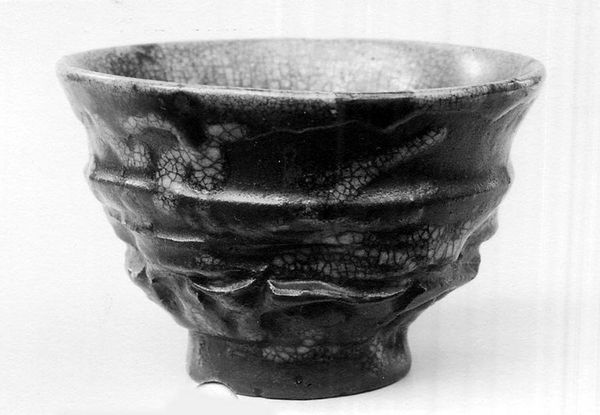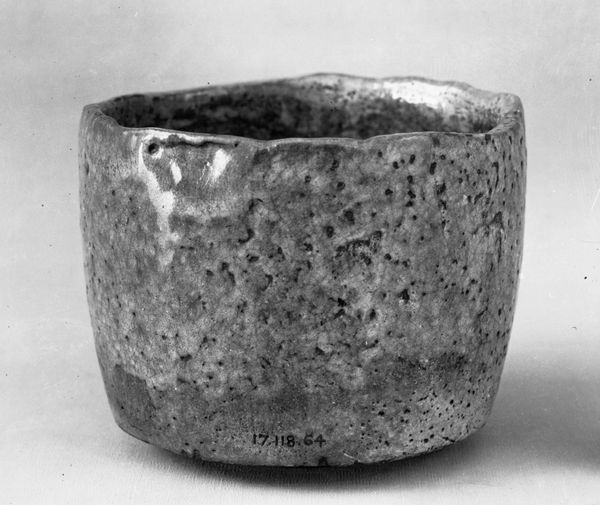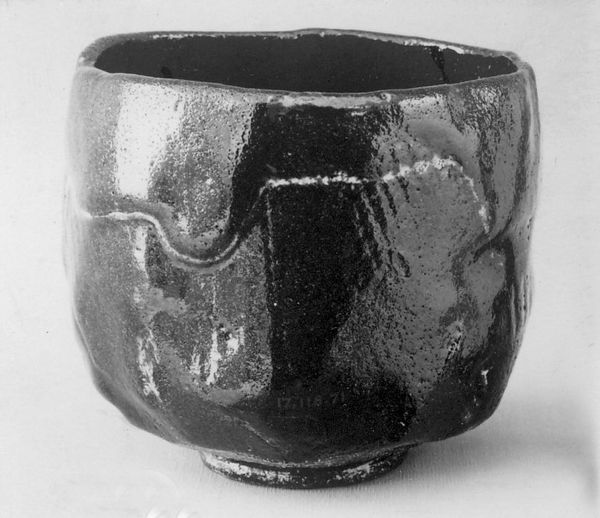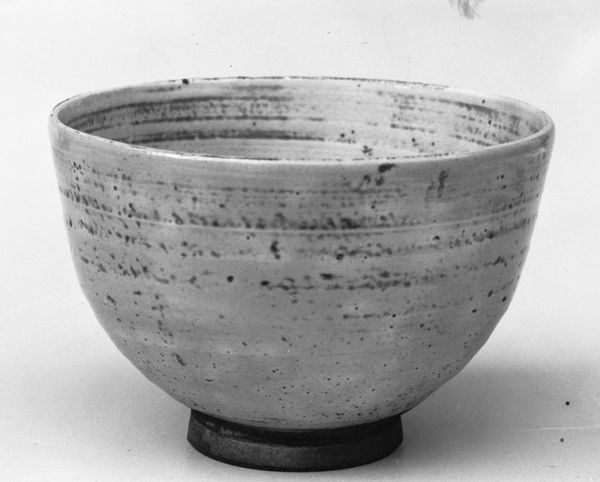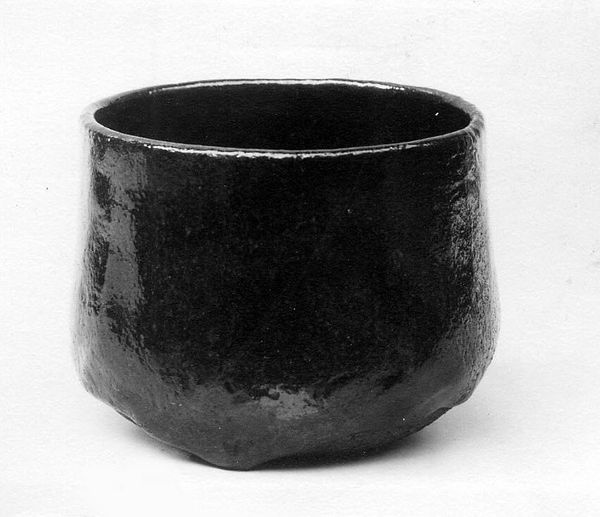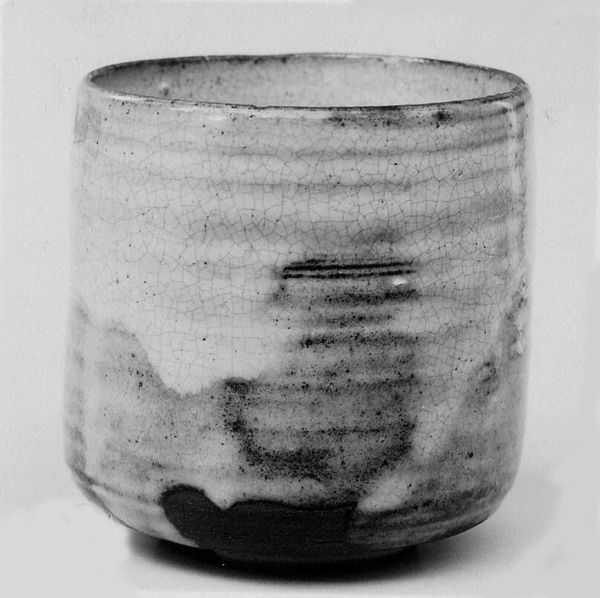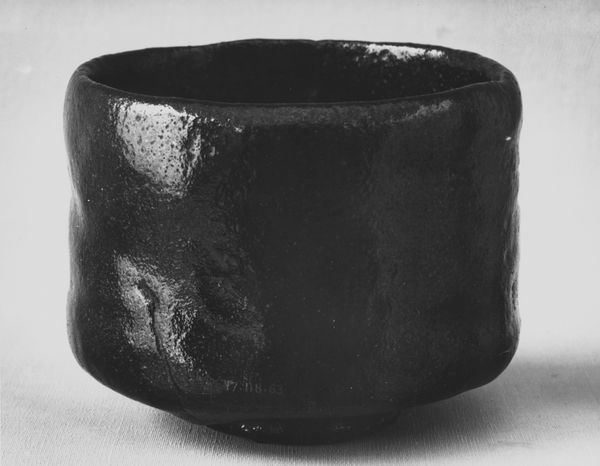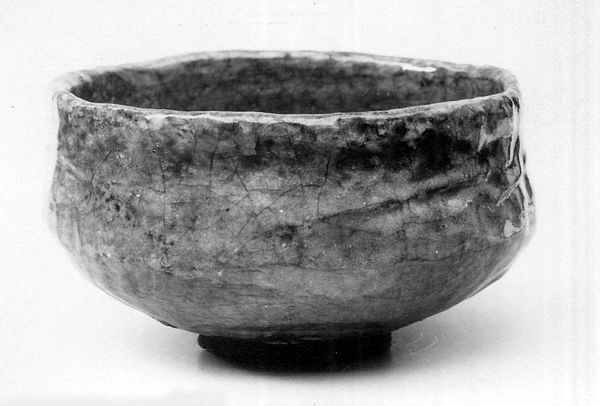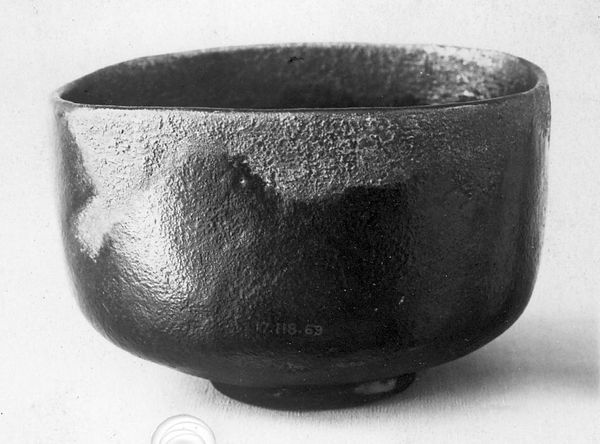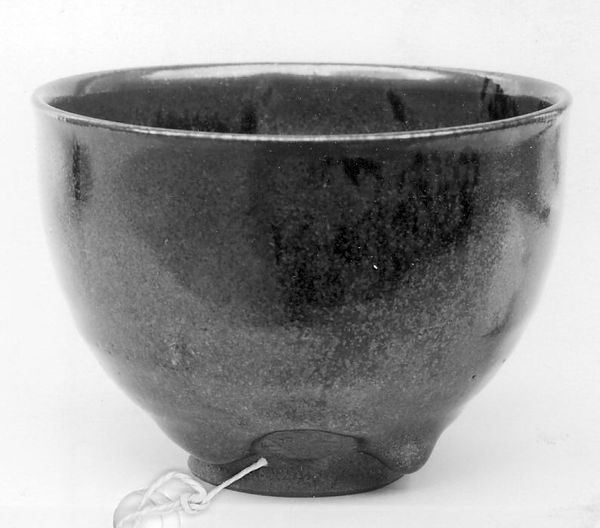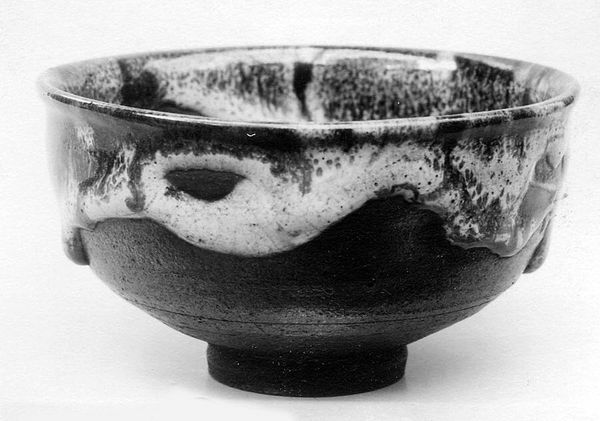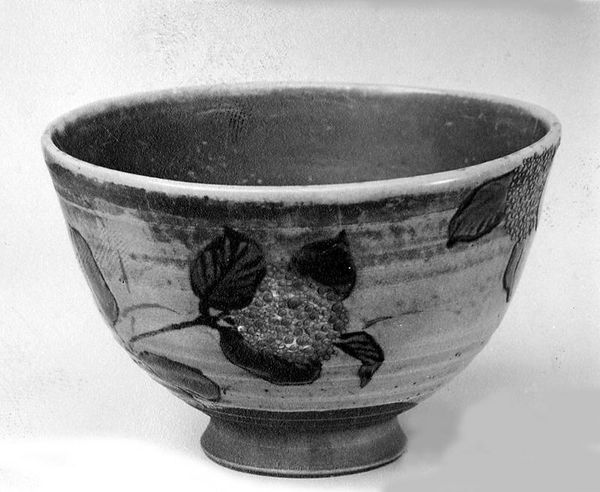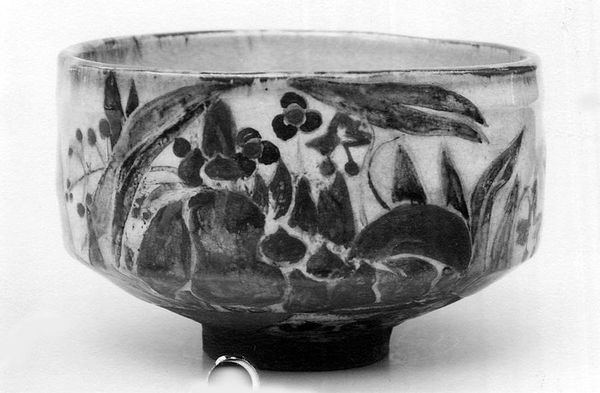
ceramic
#
asian-art
#
ceramic
#
form
#
geometric
#
abstraction
Dimensions: H. 4in. (10.2 cm); W. 4 3/8 in. (11.1 cm)
Copyright: Public Domain
Editor: This is a "Teabowl," made sometime between 1850 and 1870 by Amano Kaneshige. It’s a ceramic piece currently held at the Metropolitan Museum of Art. I’m immediately drawn to the tactile nature of it. What visual cues and cultural significance are embedded in such an object? Curator: Well, consider the texture. It is very unusual; it is so uniform and recalls organic patterns: beehives, reptile skin. It is both comforting and subtly unnerving because of this ambiguity. Editor: So the imagery plays with contrasting feelings. Is there a reason it could be intentionally made that way? Curator: Tea ceremonies have a significant ritual role, not just a break but also a social convention; a very choreographed gathering. Therefore, such symbolism may remind those engaging in the ceremony that there are rigid patterns but also natural order to existence. Editor: I never thought of a teabowl embodying something deeper than just its function! It's interesting how an everyday object can become a container for complex ideas. Curator: And remember, this object would likely have been used repeatedly in rituals: each user would be aware of the same message. Repetition cements visual knowledge, creating lasting cultural memory. Editor: That’s fascinating! I’ll never look at a teabowl the same way again, realizing it could be more than just an everyday item but also hold symbols of a society.
Comments
No comments
Be the first to comment and join the conversation on the ultimate creative platform.
